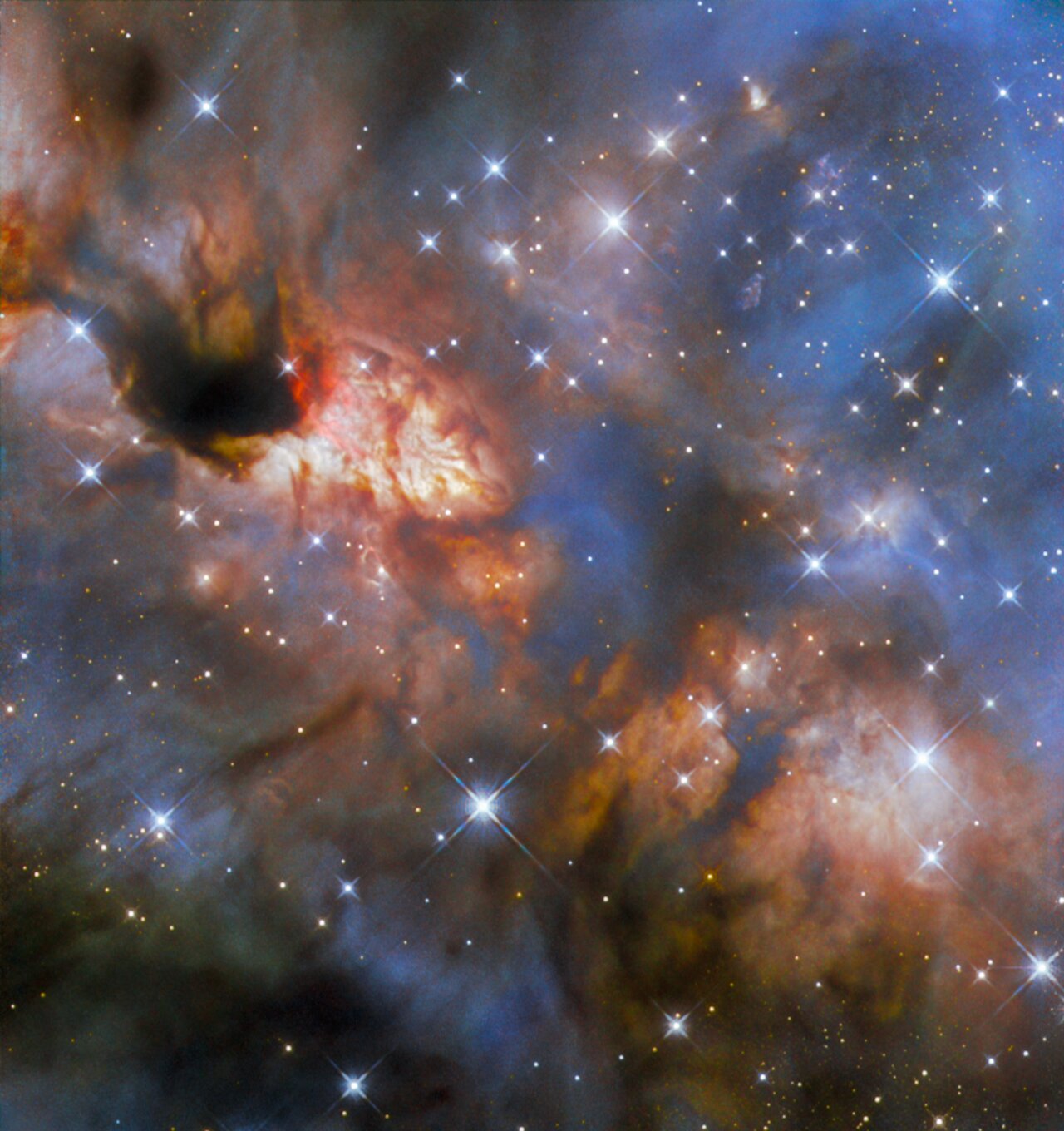Cosmos IRAS 16562-3959 Milky Way
If the Hubble Picture of the Week from two weeks ago was somewhat dim and subtle in appearance, then this week’s image is a veritable riot of colour and activity! It features a relatively close-by star-forming region known as IRAS 16562-3959 that lies within the Milky Way in the constellation Scorpius, about 5900 light-years from Earth.
This image was compiled using observations from Hubble’s Wide Field Camera 3 (WFC 3). The detailed nuances of colour are possible because of the four separate filters that were used to collect the data. Filters are thin slivers of highly specialised material that only allow very specific wavelengths of light through. They can be slid in front of the part of the telescope that is sensitive to light, letting astronomers control which wavelengths of light the telescope collects with each observation. This is useful not only for specific scientific research, but also for the creation of images like this one.
Raw telescope observations are always monochrome, regardless of which filter was used. However, specially trained artists and image specialists can select colours that match the wavelength range covered by individual filters. Or, in the case where a direct match is not possible — such as for the data used in this image, which are all in the infrared regime, which human eyes are not sensitive to — the artist can select a colour that sensibly represents what is taking place. For example, they might assign bluer colours to shorter wavelengths and redder colours to longer wavelengths, as is the case in the visible light range. Then, data from multiple filters can be combined to build up a multi-colour image, that both looks beautiful and has scientific meaning.
At the centre of the image, IRAS 16562-3959 is thought to host a massive star — about 30 times the mass of our Sun — that is still in the process of forming. At the near-infrared wavelengths to which Hubble is sensitive, the central region appears dark because there is so much obscuring dust in the way. However near-infrared light leaks out mainly on two sides — upper left and lower right — where a powerful jet from the massive protostar has cleared away the dust. Multi-wavelength images including this incredible Hubble scene will help us gain a better understanding of how the most massive, brightest stars in our galaxy are born.
[Image Description: A nebula with stars. The centre of the image from top-left to bottom-right glows brightly with light from where new stars are being formed, and is partially covered by dark dust. Coloured layers of gas and dust billow out across the rest of the image. The nebula is speckled with foreground stars with large diffraction spikes.]
